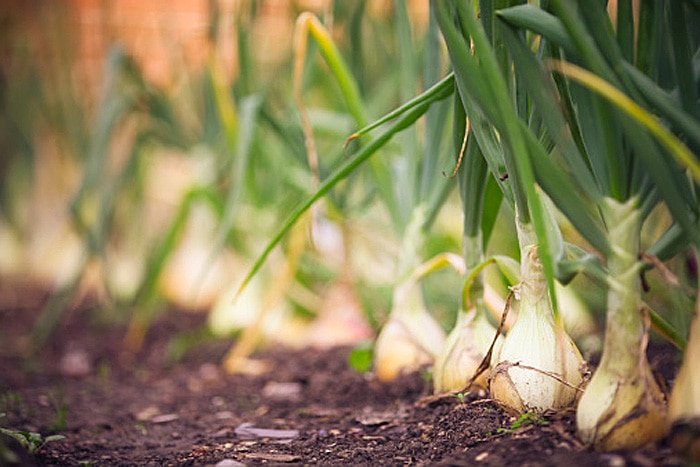
Written By: Christina Newberry
Reviewed By: Gloria Tsang, RD
Title: Registered Dietitian
Last Updated on:

With summer coming to a close, you may think you’ve missed your chance to start a vegetable garden this year. But the truth is, September is the perfect time to plant a fall vegetable garden that can have you eating straight from your back yard or patio for several months to come, and help you get an earlier harvest in the spring!

Early fall is the perfect time to plant cool-weather crops like lettuce, swiss chard, spinach, and kale for a winter harvest. These hearty winter greens are packed with nutrition. Kale in particular is a nutrition superstar, loaded with Vitamin K, Vitamin A and C, as well as fiber and phytonutrients. Don’t worry if your winter greens get hit with a light frost – in many cases, this will actually make them taste better. Once the deep cold sets in, you can preserve the life of your winter greens by covering them with clear plastic. Then wait for spring to come – you may be surprised how well greens you thought were dead bounce back to life, giving you an earlier spring harvest!
Fall is also the time to plant garlic and overwintering onions – but don’t expect to harvest these anytime soon. Your garlic will stay in the ground until next summer, when it will first produce tasty garlic scapes and then full garlic bulbs. Overwintered onions and shallots should be ready to harvest and eat in the spring. Onions and garlic are both good sources of Vitamin C and Vitamin B6.
If you’ve been growing herbs like basil, cilantro, chives, mint, oregano, and parsley outdoors, now is the perfect time to bring them inside to keep them warm enough to last through the winter, or take clippings of overgrown plants and dry them for later use. Herbs will fare best when placed on a windowsill, especially in a south-facing window where they will get lots of sun. They may wilt a bit after coming indoors, but should perk up after a few days. Windowsill-fresh herbs are a great way to add some extra nutritional value – and flavor – to winter meals that may not feature many fresh ingredients.
Most people think of gardening as a summer activity, but September is the perfect time to start a fall vegetable garden. By following the tips in this article, you can be sure to have fresh greens past the first frost, and fresh herbs all winter long. Plus, you’ll have garlic scapes, onions, and overwintered greens ready to eat in the spring!
Alumni: University of Victoria – Christina Newberry is a writer and editor whose work has appeared in national and local magazines and newspapers. With a Bachelor’s degree in English and Anthropology from the University of Victoria and a Journalism Certificate from Langara College, Christina brings keen curiosity and the love of a good story to her work with HealthCastle.com.
Christina is a passionate traveler and urban gardener with an interest in vegetarian eating and making good, tasty food from scratch. Sharing lessons learned from her own experiences, Christina writes about lifestyle topics for HealthCastle, with a focus on eating well at home and on the road.